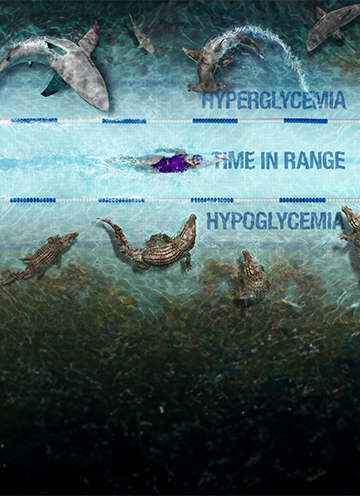A1C=glycated hemoglobin; PPG=postprandial glucose; SC RAI=subcutaneous rapid-acting insulin; T1D=type 1 diabetes; T2D=type 2 diabetes.
References: 1. American Diabetes Association Professional Practice Committee. Diabetes Care. 2024; 47 (Supplement_1): S111–S125. 2. Rosenstock J, Franco D, Korpachev V. et al. Inhaled Technosphere insulin versus inhaled Technosphere placebo in insulin-naïve subjects with type 2 diabetes inadequately controlled on oral antidiabetes agents. Diabetes Care. 2015;38(12):2274-2281. 3. Bode BW, McGill JB, Lorber DL, Gross JL, Chang PC, Bregman DB. Inhaled Technosphere insulin compared with injected prandial insulin in type 1 diabetes: a randomized 24-week trial. Diabetes Care. 2015;38(12):2266-2273. 4. Akturk HK, Snell-Bergeon JK, Rewers A, et al. Improved postprandial glucose with inhaled Technosphere insulin compared with insulin aspart in patients with type 1 diabetes on multiple daily injections: the STAT study. Diabetes Technol Ther. 2018;20(10):639-647 5. Seaquist ER, Blonde L, McGill JB, et al. Hypoglycaemia is reduced with use of inhaled Technosphere® Insulin relative to insulin aspart in type 1 diabetes mellitus. Diabet Med. 2020;37(5):752-759.
© MannKind Corporation January, 2025. US-AFR-2595
